
England’s 1984 tour of New Zealand featured a first-ever series defeat to the Kiwis, back-stage parties with Elton John and drug allegations which permanently shifted the relationship between English players and press.
Jo Harman speaks to four players involved to look back over a memorable series and separate fact from fiction.
Take a trip down memory lane every month with Wisden Cricket Monthly’s ‘Golden Summers’ section
England embarked on their 1984 tour of New Zealand having never lost a Test series to the Kiwis. They had defeated Geoff Howarth’s side 3-1 the previous summer with captain Bob Willis, the emerging left-arm spinner Nick Cook and new South African recruit Allan Lamb all excelling, and Ian Botham rediscovering his form with the bat.
However, there were signs that the gap between the two sides was closing. That tour included New Zealand’s first Test victory in England – Lance Cairns’ 10-wicket haul inspiring a memorable win at Headingley – and they had become a force to be reckoned with on home soil, going unbeaten in their previous four series, including a shock victory over West Indies in 1980.
”Botham was a very different bowler in ’84 than he was in the 70s. He couldn’t quite do things with the same violence and spite” – Jeremy Coney
Vic Marks (England off-spinner): They were a damn good side in that they had [Richard] Hadlee, who was their kingpin, and a solid batting line-up including Martin Crowe, John Wright, Geoff Howarth and Jeremy Coney. In that era they made the most of their potential and if Hadlee was on song they were dangerous.
Jeremy Coney (New Zealand batsman): We felt that we had a chance. Beating the West Indies gave us a lot of confidence and teams became frustrated because they felt they should be beating us. We would play pawn by pawn and make it hard to get at our king. I thought England had a very strong, experienced batting side, and in Lamb and Botham they had players who could change the game in a session and a half. But Botham was a very different bowler in ’84 than he was in the 70s. That continual threat of quick shape in the air both ways and bounce and aggression had been tempered. He couldn’t quite do things with the same violence and spite.
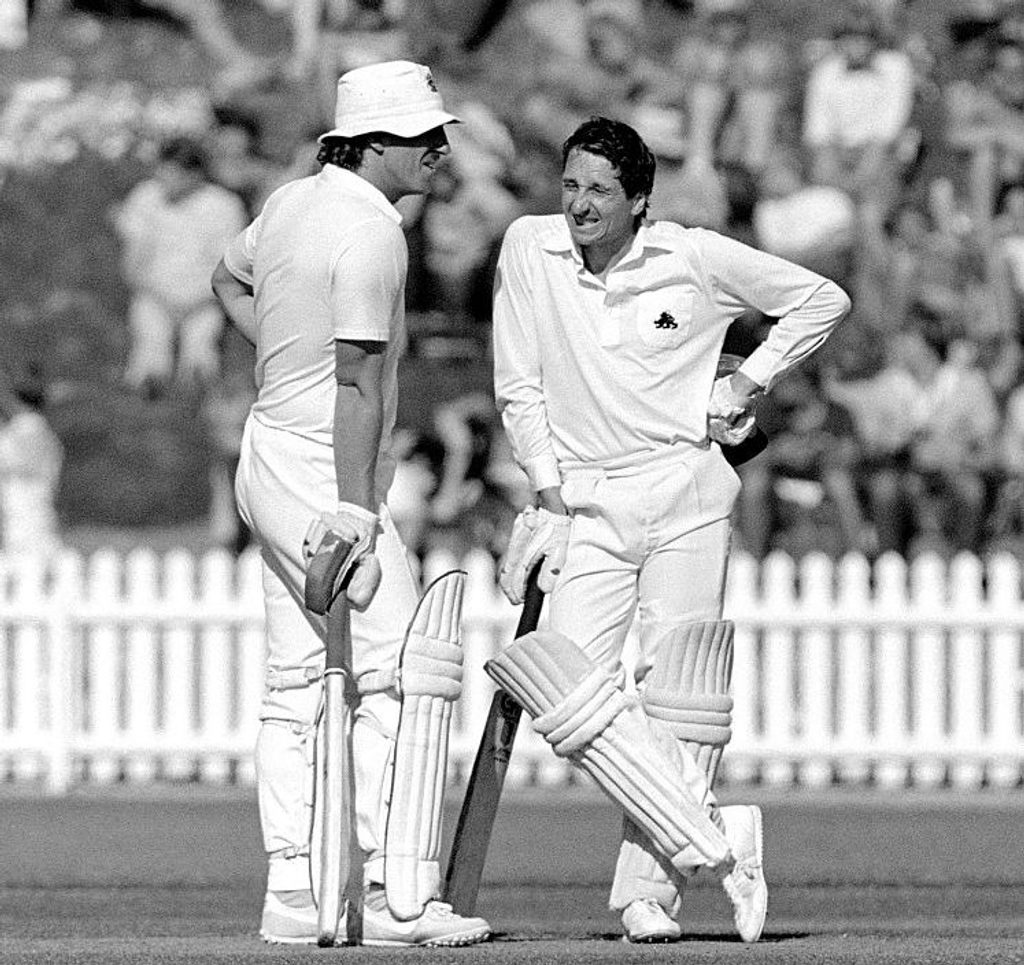 Ian Botham and Derek Randall shared a sixth-wicket partnership of 232 in the first Test in Wellington
Ian Botham and Derek Randall shared a sixth-wicket partnership of 232 in the first Test in Wellington
Before England locked horns with the Kiwis they took an unlikely detour to Fiji, playing two limited-overs matches during a five-day trip over New Year designed to promote cricket in the pacific islands. The tourists were nearly left red-faced in the second fixture, the Fijians restricting them to 146-9 in 50 overs, with Botham falling for a duck in an 18-run victory.
Marks: It wasn’t exactly a Spartan training camp in Fiji. We played a couple of games, celebrated New Year with gusto and then headed off to New Zealand. It was a novel way to start a tour.
Nick Cook (England left-arm spinner): They were competitive warm-up games for us. And obviously to go to a place like Fiji over New Year was fantastic, apart from people got absolutely bitten to pieces by mosquitoes.
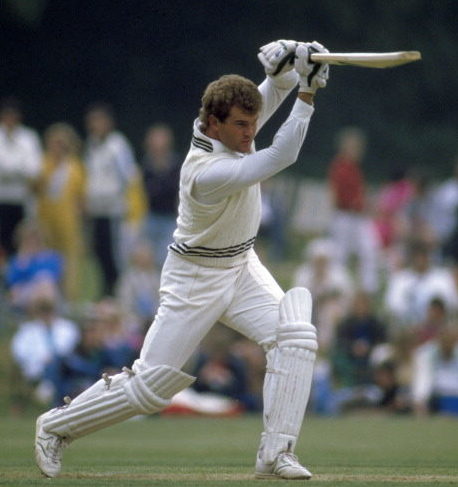 Martin Crowe’s first hundred confirmed his talent
Martin Crowe’s first hundred confirmed his talent
England made a strong start to the first Test at the Basin Reserve in Wellington, with Botham and Willis sharing eight wickets to dismiss New Zealand for 219 after the hosts had chosen to bat.
Coney: We didn’t make many on a wicket that just nipped a wee bit. Then [Derek] Randall got a hundred and Botham added froth to that, also scoring a hundred, so halfway through the match we were in the situation of having to save it.
New Zealand started their second innings 244 runs behind, needing to bat the best part of seven sessions to prevent England taking a lead in the series. The Kiwis lost both openers late on day three, leaving Howarth and 21-year-old Martin Crowe to resume the next morning.
Crowe was regarded as an immensely gifted batsman but he had made a chastening start to his Test career, failing to register a half-century in his first seven matches after being roughed up by Lillee and Thomson in his debut series two years previously.
”Crowe’s bat that day seemed to possess a sensibility, as if it was part of his nervous system; that he had a current running through his body and down through his fingers into the blade. If you ever felt that you could play a little, Martin would burst your bladders of vanity” – Coney
Coney: I was in the best seat in the house watching Martin Crowe score his first hundred. He was returning to the site of a very tricky debut but he commanded the stage. Martin always seemed to make the bowling adapt to his own notions of what was a hittable length. His bat that day seemed to possess a sensibility, as if it was part of his nervous system; that he had a current running through his body and down through his fingers into the blade. If you ever felt that you could play a little, Martin would burst your bladders of vanity.
I was a batsman who you measured exactly by the scoreboard; I compiled runs, like an accountant. Martin held your attention – he was an artist. You never added his runs up; there was always an aesthetic quality which added a bloom to them. You might as well add up the crotchets, the quavers and minims of a Beethoven symphony to realise his quality. Everybody knew how good he was, and this innings was confirmation. I was privileged to see it and I think to a certain extent some of the English players felt that as well. I remember Willis stopping partway through the over when Martin got his hundred and going over and shaking his hand.
When Crowe fell for an even hundred to Mike Gatting, New Zealand were just 35 runs ahead with five wickets remaining. It was left to Coney, within sight of a first Test century 10 years after making his debut, and the lower order to bat the hosts into an impregnable position.
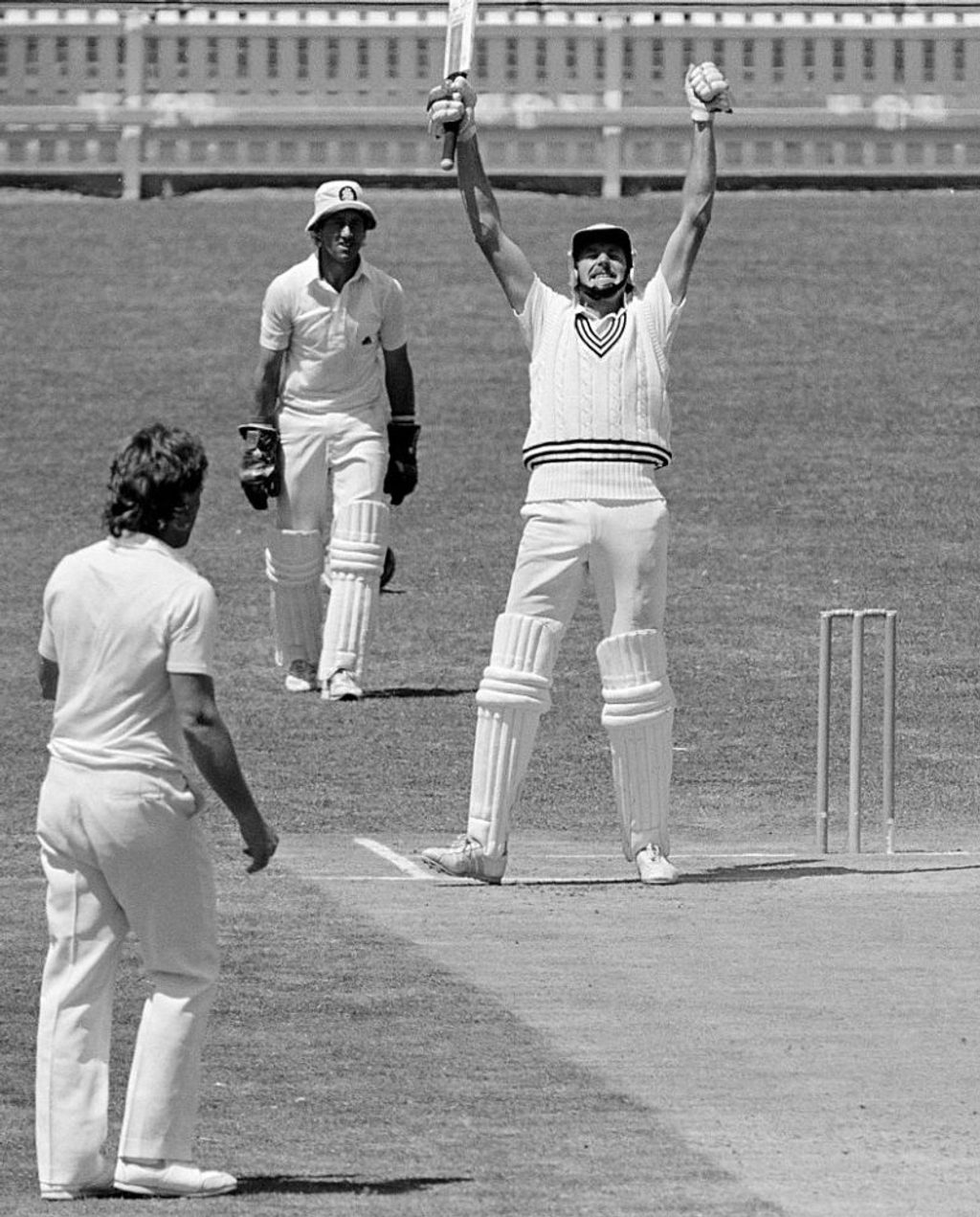 Jeremy Coney finally reaches 100
Jeremy Coney finally reaches 100
Coney: It was a very quiet dressing room on that fifth morning but luckily the pitch had become very benign. We lost Ian Smith, then Lance Cairns came in. Cairnsy trapped the ball like a soccer player under his foot as he came forward. Big loud appeal. Not given. It was home umpires in those days and probably a good move to go to neutrality.
Cook: I bowled Ian Smith and then had Cairns out lbw about second ball, knocking the lot down. Dear old Fred Goodall, who I believe was umpiring, gave it not out. That was the turning point in the whole game. If we’d got Cairns out for nought we probably would have gone on to win the Test match. He went on to hit 60 or 70. I bowled 66 or 67 overs, all but one of them was into the wind. Cairns with his big bat just kept flipping me out of the ground.
With Cairns aggressive in support, Coney nudged New Zealand to safety, finally registering three figures in his 44th Test innings, finishing 174 not out after more than eight hours at the crease.
Coney: It had been far too long really. There were little superstitious things like making sure I didn’t get a red light on the drive to the ground that morning. Time the lights! It wasn’t the most pleasant, easy way to score a hundred. It was a battle. Even though it was a draw, it felt like a partial victory. We’d got away with one.
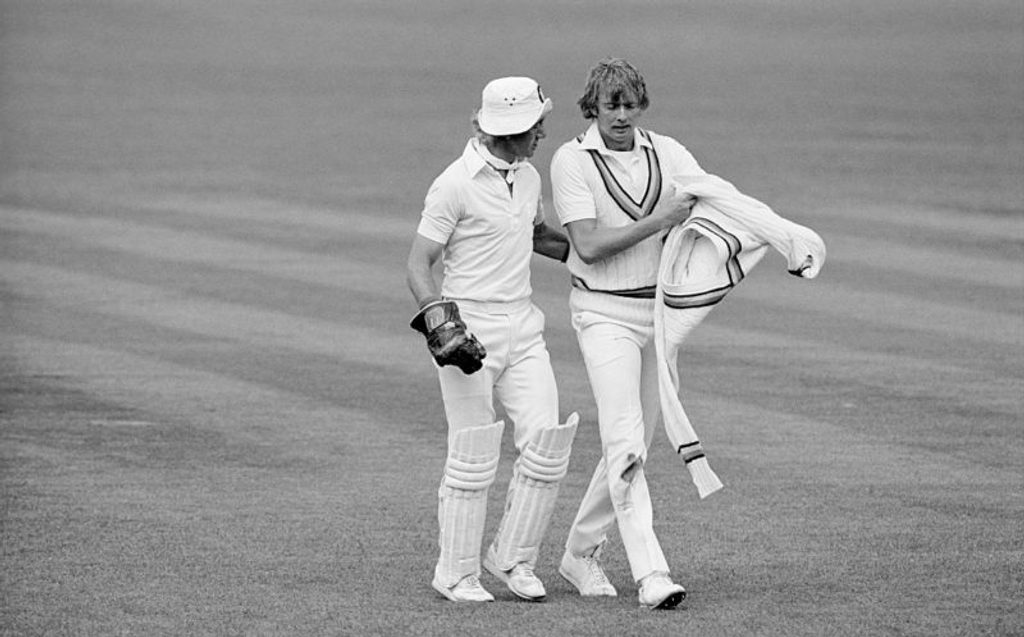 Bob Taylor of England encourages Tony Pigott, who postponed his wedding to play
Bob Taylor of England encourages Tony Pigott, who postponed his wedding to play
Bob Willis (England captain and fast bowler): We’d played pretty well on a very flat wicket but we couldn’t bowl them out in the second innings. Crowe and Coney got very good hundreds. We were shorn of players who’d gone on the South African Breweries Tour so we didn’t have a great side. They got an honourable draw.
Two weeks later the sides met again for the second Test at Lancaster Park, Christchurch. With Graham Dilley and Neil Foster unavailable due to injury, England sent for Tony Pigott, an uncapped Sussex seamer who was playing for Wellington. The only problem being, Pigott already had plans.
Marks: He had to postpone his wedding. He arrived probably 36 hours before the match. I think those injuries must have happened relatively quickly so the only possible alternatives were those who were nearby. It was either him or Neil Mallender, who was playing for Otago.
”I don’t think I was ever in the frame to play. Willis had thought, ‘You’re out of the picture’, and just discarded me” – Nick Cook
Cook: I don’t think I was ever in the frame to play. Willis had thought, ‘You’re out of the picture’, and just discarded me. My mum and dad came out to New Zealand for the last two Test matches and never saw me bowl a ball. Tony Pigott used my sweaters and got them absolutely filthy!
The Lancaster Park pitch had been a talking point in the lead-up to the match and after winning the toss, Howarth elected to bat, believing the surface would only get worse to bat on.
Coney: It was a suspect pitch. It had unusual bounce and it was kind of crusty. We were a bit lucky because England bowled so appallingly. I remember the first hour when Willis was bowling, we were lucky to survive. It was nasty. One delivery bounced over John Wright’s head from just short of a length and went for four byes, bouncing once or twice before it got to the boundary.
Willis: The pitch was horrendous – a 150 pitch at best. Perhaps because of the pressure he was under, Beefy bowled appallingly. We bowled far too short and somehow they got 300.
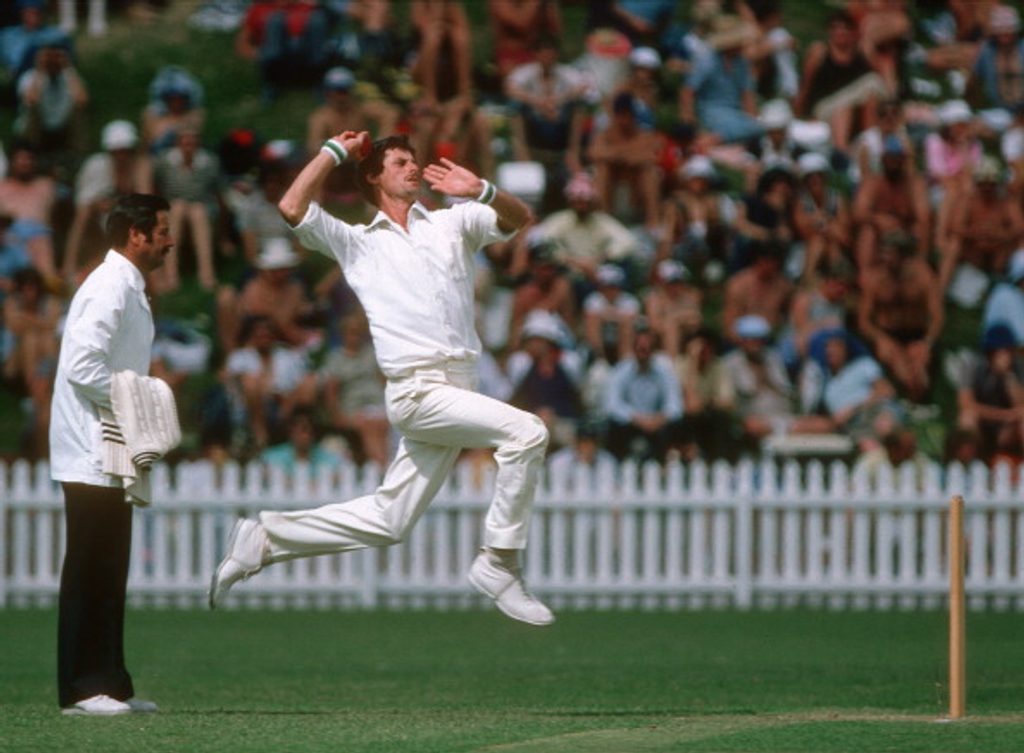 Richard Hadlee, a master, and a very different character to Ian Botham
Richard Hadlee, a master, and a very different character to Ian Botham
Marks: New Zealand were about 87-4 at lunch, which in normal circumstances you’d think wasn’t too bad. But Willis delivered a mighty bollocking. He knew that score was not par for the course on that surface. It got worse in the afternoon when Hadlee chanced his arm.
With England serving up what Willis described post-match as the worst bowling performance he had ever seen in a Test match, Hadlee took full advantage, smashing 99 from 81 deliveries to take New Zealand to 307. A five-over spell from Pigott went for 45 runs, with Hadlee helping himself to 40 of those.
Coney: Richard loved facing Tony and he smashed him. Poor old Tony kept running in and bowling little outswingers which were coming into the left-handed Richard, and he just hit them.
Cook: We seemed to get lost trying to bounce people out on what was a typical, green English-style seaming wicket. We got what we deserved. There was no love lost between Botham and Hadlee, and Botham kept trying to bounce him out and of course that didn’t work. Hadlee cut and carved and pulled.
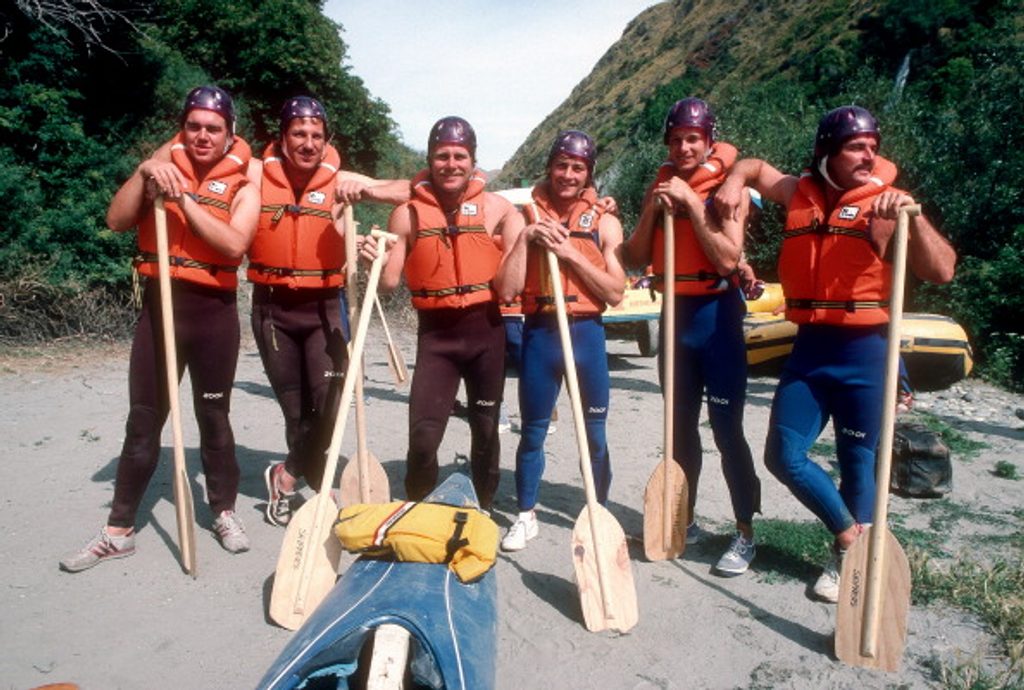 Graham Morris, Ian Botham, Chris Smith, Graham Fowler, David Gower and Allan Lamb go white water rafting
Graham Morris, Ian Botham, Chris Smith, Graham Fowler, David Gower and Allan Lamb go white water rafting
Marks: Botham and Hadlee were very contrasting characters. Hadlee was a very clinical cricketer who rationalised how he went about his business, especially as a bowler. He would know exactly what to do and clinically exploit conditions when they were in his favour. So he didn’t so much play the man. But Both used to play the man, in a way. There was no meeting of minds there. I’m sure Both had his moments where he swatted Hadlee or bounced him out, but you want to be bouncing people out on flat surfaces. When it’s zipping around you needn’t bother.
Hadlee rubbed salt into England’s wounds by delivering a seam-bowling masterclass, as the tourists were dismissed for 82 in 50.2 overs. They fared no better in their second innings, as they were bowled out for 93 to lose by an innings and 132 runs inside three days – Hadlee finishing with eight in the match. It was the first time England had failed to score 100 in both innings of a Test since 1894/95.
Coney: That surface was perfect for Hadlee and [Ewen] Chatfield. I remember Lamb batting with Botham in the second innings, he’d nearly been hit in the head and said, ‘Jeez Both, I almost tasted the leather’. And then one would scurry through. We caught well that whole game – I recall catching Lamb actually, the best catch I ever took in Tests, left-handed diving forward – and it became a bit of a procession. The size of the victory just boggled the mind.
Willis: The umpiring was very biased towards the home side but we just bowled and batted appallingly in that match. To be bowled out twice for under 100, you’ve got to take it on the chin.
”The umpiring was very biased towards the home side but we just bowled and batted appallingly” – Bob Willis
The manner of England’s defeat caused uproar back home. ‘What a disgrace’ screamed the back-page of the Daily Mirror, and worse was yet to come when it was reported that Botham and Lamb had been seen smoking marijuana in the dressing room after the defeat in Christchurch. The England camp strongly denied the allegations but the dye had been cast. The press labelled it the ‘Sex, Drugs and Rock ‘n’ Roll Tour’, and the name stuck.
Willis: The story about Botham and Lamb – and I know, because I was with them at the time – was a case of mistaken identity. There was an MCC member apparently in the bar where Beefy, Lamby and I were having a drink with a couple of New Zealanders, and we went off to bed, I guess about 11pm, and these two guys stayed in the bar a while and then went off. I understand that this MCC member mistook these two guys for Botham and Lamb, because he’d seen these two characters in the bar and then saw them in the car park, and he said, ‘Isn’t it time you’re in bed?’ They told him to get lost, but in different words to that, and he then rang the Daily Express and said that he’d been abused by Botham and Lamb, and it all kicked off from there.
Pat Gibson was the cricket correspondent at the Daily Express and he said, ‘Bob, I’m sorry to burden you with this but my editor’s got this story’. I told Pat the true story but it didn’t stop the newshounds from arriving in New Zealand to follow Beefy’s every move.
Marks: It was quite a spectacular line, but it was all nonsense. There might have been a bit of pot smoking going on elsewhere, I’m not sure, but that was one allegation we could seize on and say it was absolute rubbish.
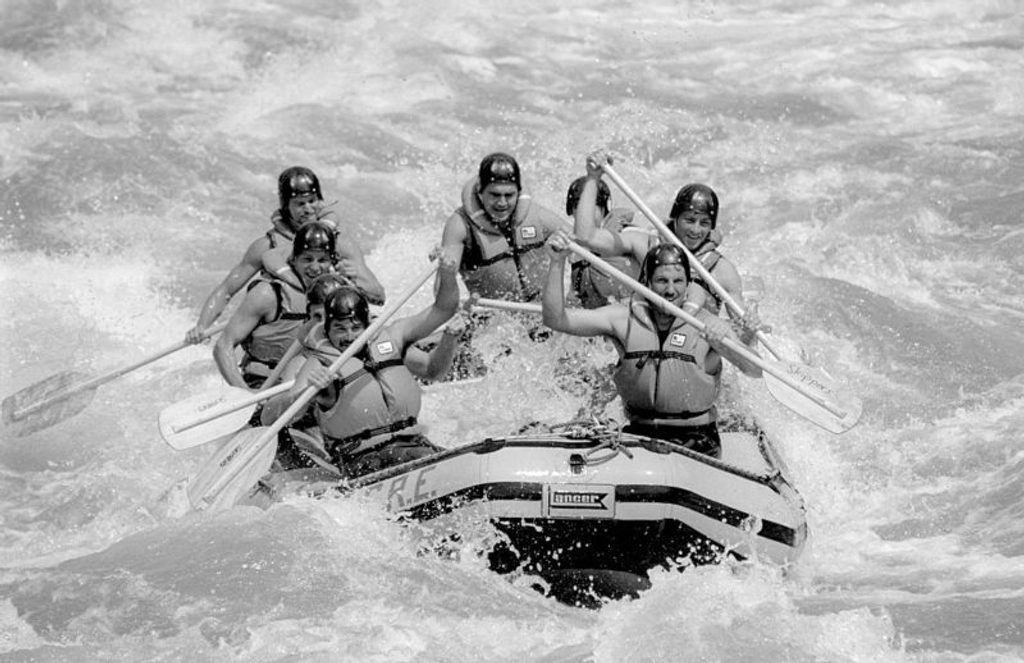 Botham and Lamb guide their teammates through treacherous waters on the Kawarau River near Queenstown
Botham and Lamb guide their teammates through treacherous waters on the Kawarau River near Queenstown
Cook: Hand on heart, I never saw it, and I would’ve been in the dressing room. If it happened it would have been in a hotel.
Coney: There was talk of the sex, drugs and rock ‘n’ roll tour. There was talk of a very relaxed atmosphere around the tour. There was talk that extramural activities were taking perhaps a higher place than they might have. I didn’t see any of that but I can acknowledge it was being spoken about.
Willis: The Botham/Lamb incident was blown up and was meant to have permeated the whole side, and the line went that rather than concentrating on the cricket they were out carousing all day and night, which is what happens when you lose.
 Elton John was a regular part of the social scene throughout the tour – and later tours
Elton John was a regular part of the social scene throughout the tour – and later tours
The rock ‘n’ roll aspect of the story was at least partially true, with cricket enthusiast Elton John fitting his tour schedule around England’s fixtures and regularly socialising with the players.
Cook: I went to see Elton John on at least two occasions. We got backstage passes and all that malarkey.
Marks: Elton John got on well with Beefy and they had a good time, no doubt. I remember him at one point saying something like, ‘Both wouldn’t be able to get away with quite as much if he was playing for Watford!’.
Willis: Whenever Elton was around Beefy went off and spent time with him to get away from the press guys, some of whom were jumping into hotel lifts with players, trying to pick up gossip, it was pretty unpleasant. Then of course Beefy got tainted with that – apparently he shouldn’t have been doing that either.
Despite the extra press attention, the tour continued to be a sociable experience for players on both sides.
Coney: Willis and Howarth had played together at Surrey and they got on very well. The after-tour party was a very convivial and relaxed atmosphere and I remember those two singing Bob Dylan numbers together.
Marks: It was quite a lively, sociable tour but no one was hit, no one was charged, no one ended up in court. The relationships between the two sides were good. I remember John Wright organising a trip in Queenstown, I think to do some jet boating.
Cook: I remember going fishing and I hooked what turned out to be a 24lb salmon but I never landed it because Beefy nicked my rod and landed it for me – very much without request. You need a bit of R&R and, despite what everyone was saying, that was ours.
“It produced this siege mentality which followed Beefy on tour for the rest of his career” – Willis
The third and final Test at Eden Park in Auckland was a drab draw, with New Zealand scoring 496-9 declared before England responded in kind with 439. The tourists had paid the price for their disastrous performance in Christchurch, succumbing to a first series defeat to the Kiwis.
Coney: All I remember about the third Test is that it was achingly dull, on Port Albert soil which was like wet bread and butter. Lifeless and turgid. Wright, Jeff Crowe and Smith got hundreds and then England needed to attack to win the game, but it wasn’t an easy pitch to take that approach on.
Marks: Auckland can be very flat and it suited the Kiwis wonderfully. In those days draws were not so hard to find. If you were spinning it, you could say that two dire days in Christchurch decided the way the tour was remembered. We didn’t play too badly in Wellington and in Auckland it was just a slow run-fest.
New Zealand were on an upward trajectory which led to them winning five of their next seven series, with Coney replacing Howarth as captain in 1985 and leading the most successful Kiwi side in their history.
England, meanwhile, flew straight from New Zealand to Pakistan, where they lost the three-Test series 1-0 – also a first-ever series defeat to the Pakistanis – prompting Wisden to describe the whole tour as “among the unhappiest England have ever undertaken”.
The Test and County Cricket Board held an inquiry which cleared England’s tour party of doing anything off the field which may have impaired their performance, but nonetheless the mythology of the ‘Sex, Drugs and Rock ‘n’ Roll tour’ was assured. The relationship between England’s players and media would never be the same again. “It produced this siege mentality which followed Beefy on tour for the rest of his career,” says Willis. “His room became known as the ‘bat cave’ and he was never seen in the bar with anybody any longer.”







